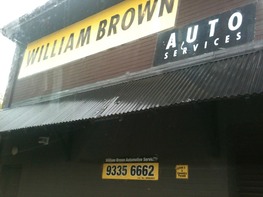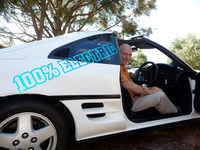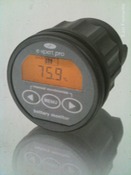
Finding an auto mechanic with an interest in things electrical, or an auto electrician with mechanical skiils may not be hard, but then again it may be.
I seem to have found the perfect setup - a mechanical service I've know and trusted for years, with a recent interest in EVs… if only I had asked them before now!
Sep13
I've been looking for a local mechanic or auto electrician who could help with the ongoing maintenance of ZEV240. The major issue is whether it needs a specialist. Here is what I have resolved so far.
The standard joke is that the wiper blades still need replacement, even if they wear out a bit slower than the tyres :-). Nevertheless these EV things still use oil - in the gearbox/diff, mainly, if you have kept one and I guess brake fluid is probably a hydro-carbon. Add steering, suspension, brake pads and its easy to see that many mechanic skills are still relevant.
As well as trying to ensure the costs were reasonable, finding someone local would save me a long drive. The two well-known conversion shops in and around Perth, Western Australia are the EV Shop (who built this little zinger) and EV Works (who import much of the equipment). They are both good but each is across town from each other, and yet somehow on the other side of town from me as well.
I did approach some Toyota dealers, but they seemed to think that the service book trumped the fact that a few parts were missing, and I never felt like the service was going to cover the issues without inflating the price.
Now it looks like I've now found a mechanical service - Willem, who now runs William Brown Auto Service, is only a few kilometres away. He is interested in the car as a form of transport, and both has an interest in EV conversions (he saw Glen George's MG conversion a while ago and was impressed) and realises that there isn't much left to service!
A checklist for a new mechanic to an EV...
What exactly should I be telling them is different? How do I ensure their safety and mine? Well, here is my list, please tell me if there is anything missing!
- The new power: I'll give them a reminder on the need for safely around 'high voltage' systems (I gather 1000V+ is considered REAL high voltage, but I dont want anybody to get hurt…;-) ) and exactly where these high voltage lines are (easy as they are highly visible with orange shrouding etc).
- Safety features: Next where the high voltage disconnect button is in case of an accident (under the 'hood', which in the mid-motored MR240 is behind the passengers), and when to use it (such as a motor short circuit, a stuck accelerator or to be safe in a major accident; but it happens to reset my logging data, so only do it if it's necessary please!). This step renders all the car's electrics as 'low voltage only', i.e. 12V in normal circumstances.
- What was lost: The basic mechanicals associated with an electric drive system, so what was lost and what was added in the conversion (eg an electric brake booster and electric heater are new, the accelerator cable now ends up at a pot box), how different it is to to drive (like no clutch needed at take-off), I use 2nd to 5th gear, often skipping 3rd or 4th, and so on.
- What was added: Then the additions, including motors, power controllers, batteries and battery management. The key one is probably your battery monitoring system, in my case in two parts: first an e-Xpert Pro gauge for monitoring the 150V Lithium traction pack, and what its numbers mean; and a battery management system or BMS in the motor bay, and its purpose. There is more detail but boring them with error conditions of BMSs is silly when it shouldn't happen in a quick service; and items like what the red and green BM module LEDs mean may not be critical.
- Caring for an EV: Finally how to a) take care of an electric motor - which varies for AC and DC motors - in my case a speed limiter at 5000rpm, and replacement brushes at 50,000km may solve most problems; and b) how to take care of a traction battery (avoiding flattening it, in my case not below 30% is good practice) and how to charge it - I use a 15A plug and cable, stored in the boot - and it charges at about 20%/hour.
- And of course if I get the chance to proselytise about how good EVs are, I might take it ;-).
I admit that point 6 isn't strictly on task… still, I might as well show them there is life - and work - after petrol vehicles drop away! There will still be non-electric cars and trucks, conversions and modding, AND electric vehicles will still need servicing, work and maintenance, even upgrading.
Don't forget that ICE conversions do not need to be considered 'fixed' or 'done' - they can continue to be 'converted'. For example, the Car Service Tips site says: 'battery technology is rapidly improving in cost/performance ratios ... The EV that is converted today will be upgradeable by future battery (and perhaps charger) replacement'.
I don't mind reminding people that the cost of running EVs are lower, usually much lower, than traditional ICE cars. Another point to make is that range isnt so important if there are chargers everywhere. And I love that my nearest public charger is free, as is the parking - Fremantle City Henderson St car park. It is so easy to rattle on too much…
So that is my current list, just six points, but really only the first five; and I may have missed something. I'm probably too close to it… but its a non-trivial list when you look at it! Any other suggestions would be gratefully accepted.
bdc

